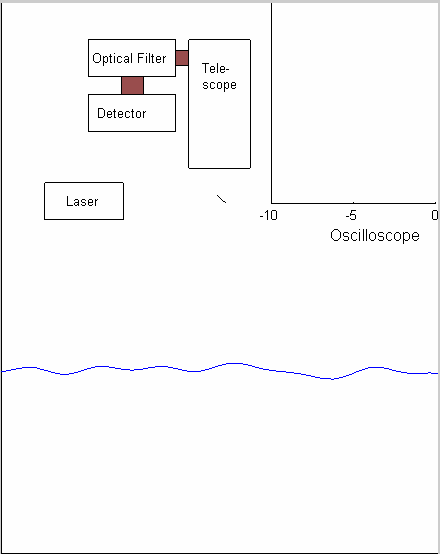1. Lidar
How does a lidar work? (1/2)
On the previous page, we explained the schematic structure of a lidar showing the elements laser, telescope, spectograph and photodetector. On this page, we shall try to explain thoroughly how a lidar works. Take a close look at the animation on the right. It shows a lidar which is positioned from above towards a water surface:
- The laser emits a short flash of light (a laser pulse)
- The laser pulse is deflected by a mirror in front of the telescope, directing it towards the water surface along the optical axis (i.e., the line of observation) of the telescope
- A fraction of the light is reflected by the water surface, but most of it is transmitted to the water column
- The water column itself reflects light. This light is caused by light scattering on water molecules and suspended particles
- The reflected light is collected by the telescope, analysed by the spectograph (or an optical filter) and then detected with the photodetector.
- The outcoming signal is displayed in the little box on the upper right corner, whereby the x-axis shows the elapsed time (in relative units) from the moment the laser pulse was emitted, and the y-axis shows the intensity of the light detected.

Time flow of operation where a lidar is used to analyse the upper water column.
